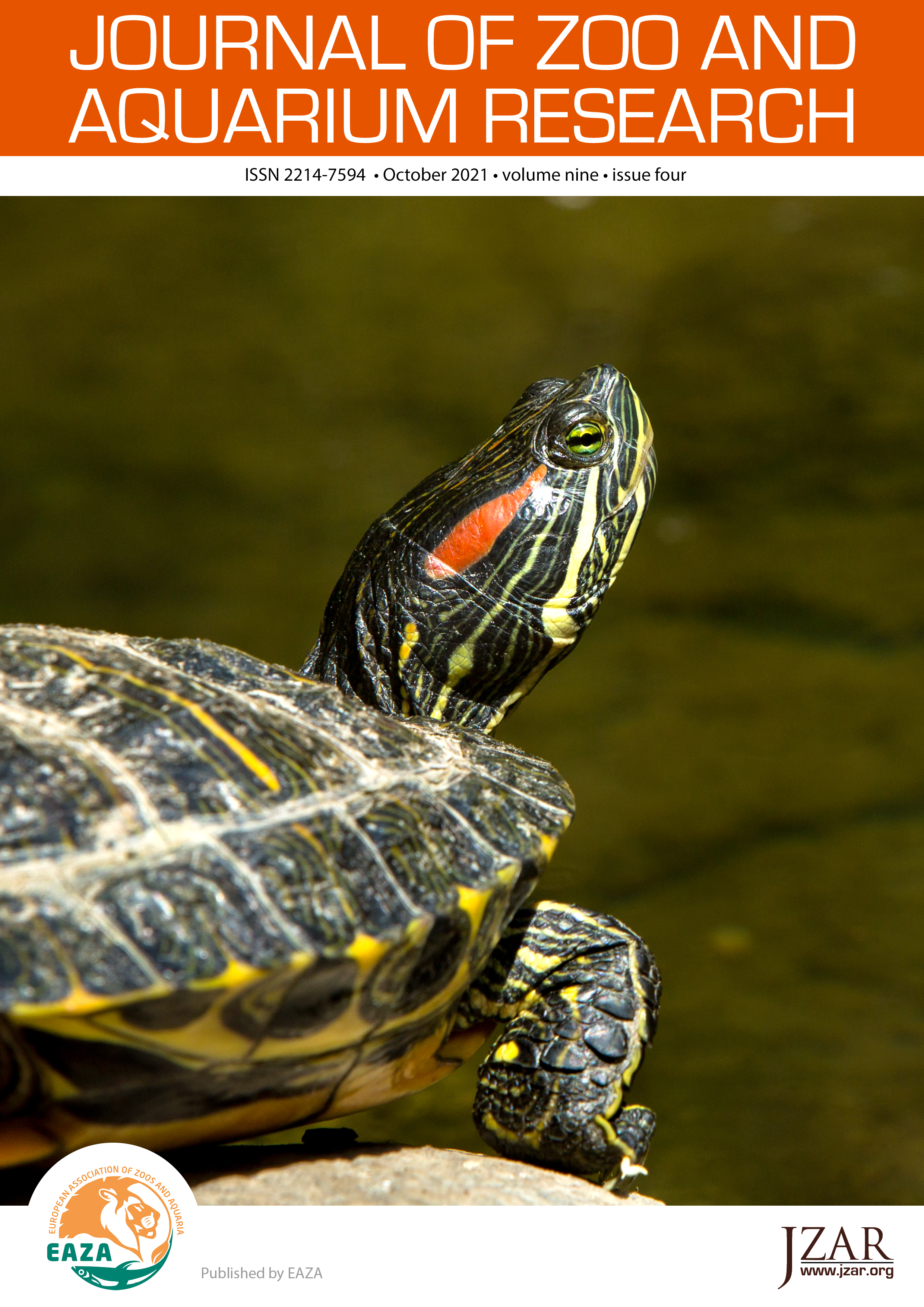Interest in coloured objects and behavioural budgets of individual captive freshwater turtles
DOI:
https://doi.org/10.19227/jzar.v9i4.623Keywords:
enrichment, escape behaviour, novelty stressAbstract
Recent studies showed that freshwater turtles display inter-individual differences in various behavioural traits, which may influence their health and welfare in captivity due to differences in response to husbandry and enrichment strategies and in ability to cope with the limitations of the captive environment. This study investigated a possible correlation between individual level of escape behaviour under standard enrichment conditions and level of interest in coloured objects in a group of cooters Pseudemys sp. and sliders Trachemys scripta ssp. on display at a public aquarium. Interest in different colours, colour preference and individual differences in behavioural changes in the presence of the new enrichment were also studied. Turtles categorised as ‘high’ and ‘moderate escape behaviour’ (17–34% of behavioural budget) showed more interest in coloured objects and tended to display less escape behaviour in their presence, while turtles categorised as ‘low escape behaviour’ (<10% of behavioural budget) were less interested in coloured objects and tended to display more escape behaviour in their presence. Overall, there was more interest in yellow than in red, white or green objects, with more contacts with coloured objects before feeding and at the start of each observation period and a preference for yellow against red objects. The individual differences in behavioural changes in the presence of the new enrichment suggested that more studies into colour preference and response to novelty in turtles would be beneficial to ensure that no individuals are unduly stressed by new enrichments.
Downloads
Published
How to Cite
Issue
Section
License
JZAR fulfils the DOAJ definition of open access and provides free and open access to the full text of all content without delay under a Creative Commons licence. The copyright holder of JZAR publications grants usage rights to third parties, allowing for immediate free access to the work and permitting any user to read, download, copy, distribute, print, search, or link to the full texts of articles.







